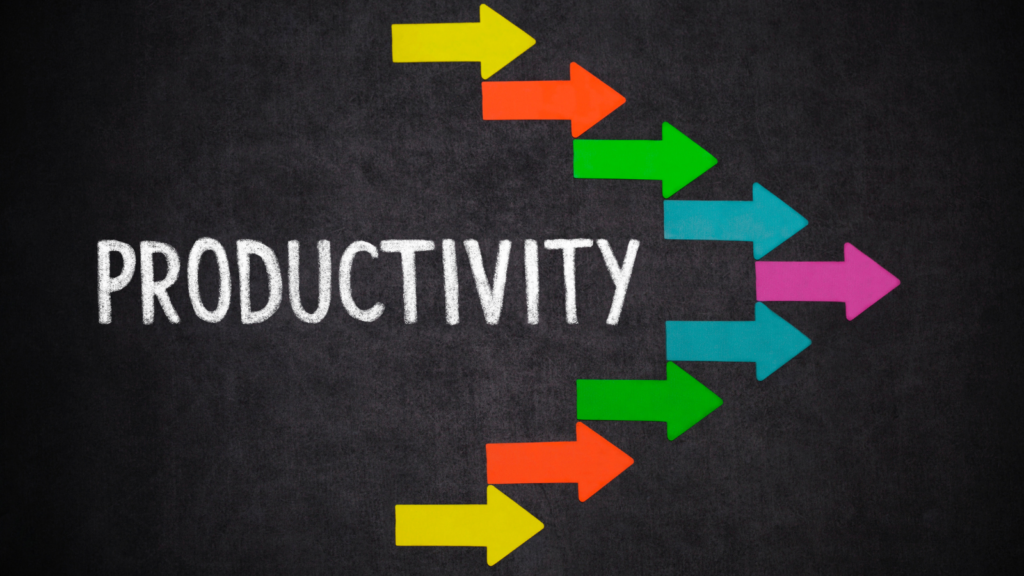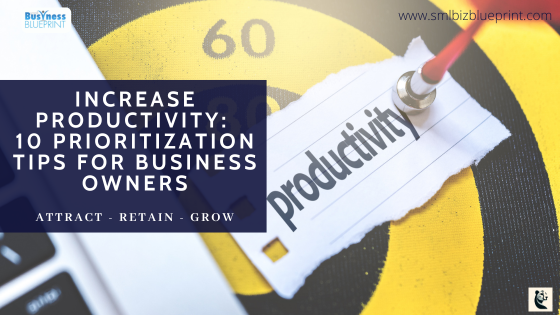As a business owner, time is one of your most valuable resources.
Managing a business involves juggling a multitude of responsibilities, from overseeing daily operations to strategising for long-term growth.
With so many tasks demanding your attention, it can be challenging to determine which activities deserve your focus and which can be deferred.
This is where the art of prioritising tasks becomes crucial.
Effective prioritisation isn’t just about making a to-do list; it’s about strategically identifying which tasks will drive your business forward and which ones can wait.
It’s about understanding the difference between what’s urgent and important and ensuring that your efforts align with your core business objectives.
By mastering the skill of prioritisation, you can optimise your workflow, enhance productivity, and reduce stress, ultimately leading to better business outcomes.
In this post, we will explore how prioritising tasks can help you make better use of your time and achieve your business goals more efficiently.
From avoiding procrastination to improving decision-making, we’ll cover the key benefits and practical strategies that can transform the way you manage your daily responsibilities.

By the end of this article, you’ll have actionable insights to help you prioritise effectively, ensuring that you focus on what truly matters for your business success.
#1 Focus on Important Tasks
One primary benefit of prioritising tasks is that it helps you focus on what truly matters.
By identifying and prioritising the most important tasks, you ensure that your energy and resources are directed towards activities that have the greatest impact on your goals.
This focus can lead to significant improvements in your business’s performance and growth.
Tips
- Use the Eisenhower Matrix: Classify tasks into four categories: urgent and important, important but not urgent, urgent but not important, and neither urgent nor important.
- Set Clear Goals: Define your business goals clearly to help identify which tasks align with these objectives.
- Limit Your Daily To-Do List: To ensure significant progress, focus on accomplishing the top three most important tasks each day.
#2 Avoid Procrastination
Procrastination is a common challenge for many business owners. Prioritising tasks gives you a clear roadmap of what needs to be done, reducing the tendency to delay important tasks in favour of less critical ones.
When you have a prioritised list, it’s easier to stay on track and maintain momentum.
Tips:
- Break Down Tasks: Divide larger tasks into smaller, manageable steps to make them less daunting and easier to start.
- Set Deadlines: Assign specific deadlines for each task to create a sense of urgency and accountability.
- Eliminate Distractions: Identify and remove distractions from your workspace to maintain focus on high-priority tasks.
#3 Increase Efficiency
Knowing which tasks are most critical allows you to plan your day more efficiently. You can allocate appropriate time and resources to each task, leading to a more structured and productive workflow.
This efficiency helps you get more done in less time, freeing up valuable hours for other important activities.
Tips:
- Time Blocking: Schedule specific blocks of time for different tasks or categories of work to ensure focused and efficient use of time.
- Use Productivity Tools: Leverage tools and apps like Trello, Asana, or Todoist to organise and track your tasks.
- Delegate: Assign tasks to team members where possible to ensure that the most suitable person handles each task.
#4 Reduce Stress
Having a prioritised task list helps reduce stress by providing clarity and direction. When you know exactly what to focus on next, you are less likely to feel overwhelmed by the sheer volume of tasks.
This clarity can lead to a more relaxed and focused mindset, improving your overall well-being.
Tips:
- Plan Ahead: Spend a few minutes each evening planning your tasks for the next day to start your day with a clear plan.
- Practice Mindfulness: Engage in mindfulness practices such as meditation to reduce stress and improve focus.
- Take Regular Breaks: Schedule short breaks throughout your day to rest and recharge, preventing burnout.

#5 Enhance Decision-Making
Prioritising tasks improves your decision-making process. It enables you to quickly assess and choose the most important actions, minimising the time spent on less significant activities.
This streamlined decision-making process ensures that you are always working on the tasks that will have the most substantial impact on your business.
Tips:
- Use Data and Metrics: Base your decisions on relevant data and metrics to ensure that you are focusing on the tasks that drive results.
- Seek Input: Get feedback and insights from your team to make more informed decisions.
- Review and Adjust: Regularly review your priorities and make adjustments as needed to stay aligned with your goals.
#6 Achieve Goals Faster
You make steady progress towards your goals by consistently working on high-priority tasks. This focused approach ensures that important milestones are reached more quickly, accelerating your business’s growth and success.
Tips:
- Set SMART Goals: Ensure your goals are Specific, Measurable, Achievable, Relevant, and Time-bound to facilitate clear prioritisation.
- Track Progress: Use tools and systems to monitor your progress towards your goals and adjust your approach as needed.
- Celebrate Milestones: Acknowledge and celebrate the achievement of key milestones to maintain motivation and momentum.
#7 Improve Time Management
Effective time management is crucial for business owners, and prioritising tasks is a key aspect of it. You can better manage your overall schedule and commitments by allocating your time wisely and ensuring that important tasks are completed within deadlines.
Tips:
- Set Daily Priorities: Start each day by identifying the top three priorities you need to accomplish.
- Create a Routine: Establish a consistent daily routine to streamline your workflow and improve time management.
- Avoid Multitasking: Focus on one task at a time to increase efficiency and reduce errors.
#8 Enhance Work-Life Balance
Balancing work and personal life is essential for long-term success and well-being. Prioritising tasks helps you avoid overcommitting and better manage your time, leading to a healthier work-life balance.
When you focus on what truly matters, you can achieve more while still having time for yourself and your loved ones.
Tips:
- Set Boundaries: Define clear boundaries between work and personal time to ensure you have time to recharge.
- Prioritise Self-Care: Make self-care activities such as exercise, hobbies, and relaxation a regular part of your schedule.
- Unplug After Hours: Disconnect from work-related communications after business hours to maintain a healthy work-life balance.

#9 Maximize Productivity
Prioritising tasks ensures that you are working on the right things at the right time. This maximises your overall productivity and output, enabling you to accomplish more in less time.
By focusing on high-priority tasks, you can achieve better results and drive your business forward.
Tips:
- Use the Pomodoro Technique: Work in focused intervals (e.g., 25 minutes) followed by short breaks to maintain high productivity.
- Automate Repetitive Tasks: Use automation tools to handle routine tasks, freeing up your time for more critical activities.
- Review and Reflect: Regularly review your productivity levels and identify areas for improvement.
#10 Better Resource Allocation
Effective resource allocation is vital for business success. Prioritizing tasks helps you allocate resources such as time, energy, and tools efficiently.
This ensures that you are using your resources efficiently and getting the best possible return on your investments.
Tips:
- Assess Resource Needs: Regularly evaluate the resources required for each task and allocate them accordingly.
- Optimise Tools and Technology: Invest in tools and technology that streamline processes and improve efficiency.
- Monitor Resource Usage: Keep track of how resources are being used and make adjustments to optimise their utilisation.
Key Takeaways
Clear Goals and Prioritization Frameworks:
- Set Clear Goals: Defining your business goals clearly helps in identifying tasks that align with these objectives.
- Use the Eisenhower Matrix: Classify tasks into four categories: urgent and important, important but not urgent, urgent but not important, and neither urgent nor important.
- Set SMART Goals: Ensure your goals are Specific, Measurable, Achievable, Relevant, and Time-bound to facilitate clear prioritisation.
Effective Time Management Techniques:
- Time Blocking: Schedule specific blocks of time for different tasks or categories of work to ensure focused and efficient use of time.
- Set Deadlines: Assign specific deadlines for each task to create a sense of urgency and accountability.
- Avoid Multitasking: Focus on one task at a time to increase efficiency and reduce errors.
Stress Reduction and Well-being Practices:
- Plan Ahead: Spend a few minutes each evening planning your tasks for the next day to start your day with a clear plan.
- Take Regular Breaks: Schedule short breaks throughout your day to rest and recharge, preventing burnout.
- Prioritise Self-Care: Make self-care activities such as exercise, hobbies, and relaxation a regular part of your schedule.
These elements are crucial for managing time effectively, enhancing productivity, and maintaining a healthy work-life balance for business owners.
Unique Enhancements
Mind Mapping Tools
Mind mapping tools like MindMeister or XMind can help visualise and organise thoughts, tasks, and projects in a non-linear way. This can be particularly useful for brainstorming, planning, and seeing connections between different tasks and goals that might not be immediately obvious with traditional lists.
Tips:
- Visualise Goals and Tasks: Use mind maps to lay out your business goals and the tasks needed to achieve them.
- Collaborate with Teams: Share mind maps for collaborative planning and idea generation with team members.
- Track Progress: Use mind maps to track progress on projects and ensure all aspects are covered.
Standing Desk
Using a standing desk can improve posture, reduce the risk of certain health issues, and boost energy levels. The increased energy and improved physical health can enhance focus and productivity, making it easier to tackle high-priority tasks efficiently.
Tips:
- Adjustable Desk: Choose an adjustable standing desk to switch between sitting and standing throughout the day.
- Ergonomic Setup: Ensure your desk and monitor are set up ergonomically to avoid strain.
- Movement Breaks: Incorporate short movement breaks to stretch and stay active.
Bullet Journaling
Bullet journaling is a flexible, analog system for organising tasks, events, and notes. It combines elements of a planner, a to-do list, and a diary. The process of physically writing and creatively organising information can enhance memory retention and provide a clearer, more personalised view of priorities and progress.
Tips:
- Daily Logs: Keep daily logs of tasks, events, and notes to stay organised and track progress.
- Custom Collections: Create custom collections for projects, goals, and other important areas.
- Review and Reflect: Regularly review your bullet journal entries to reflect on progress and make adjustments.
Conclusion
Prioritising tasks is a powerful strategy for business owners looking to make better use of their time. By focusing on important tasks, avoiding procrastination, increasing efficiency, and reducing stress, you can achieve your goals faster and improve your overall productivity.
Implementing these prioritisation techniques will help you manage your business more effectively and create a healthier work-life balance.
Start prioritising your tasks today and experience the benefits firsthand. Identify your most critical tasks and focus on them to drive your business towards greater success.
FAQs
Q1: How do I determine which tasks are most important?
A1: Use the Eisenhower Matrix to classify tasks into four categories: urgent and important, important but not urgent, urgent but not important, and neither urgent nor important. Focus on tasks that are both urgent and important.
Q2: How can I avoid procrastination when I have a long to-do list?
A2: Break down larger tasks into smaller, manageable steps, set specific deadlines for each task, and eliminate distractions from your workspace to maintain focus.
Q3: What tools can help me increase my efficiency and productivity?
A3: Productivity tools like Trello, Asana, and Todoist can help you organise and track your tasks. Additionally, using the Pomodoro Technique and automating repetitive tasks can enhance productivity.
Q4: How can I manage stress while handling multiple business responsibilities?
A4: Plan your tasks ahead of time, practice mindfulness, and take regular breaks to rest and recharge. Maintaining a clear and prioritised task list also helps reduce stress.
Q5: How can I achieve a better work-life balance as a business owner?
A5: Set boundaries between work and personal time, prioritise self-care activities, and unplug from work-related communications after business hours to ensure you have time to recharge.
Q6: What are some unconventional tools that can help with task prioritisation and productivity?
A6: Mind mapping tools like MindMeister, standing desks for improved posture and energy levels, and bullet journaling for personalised task organisation and progress tracking are effective unconventional tools.
Q7: How can I improve my decision-making process?
A7: Use data and metrics to inform your decisions, seek input from your team, and regularly review and adjust your priorities to stay aligned with your business goals.
Other Articles
Blueprint for Small Business Success: Jack Welch’s 10 Key Leadership Principles




